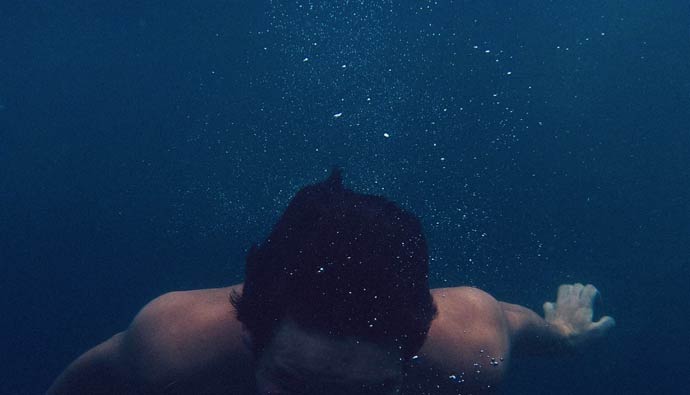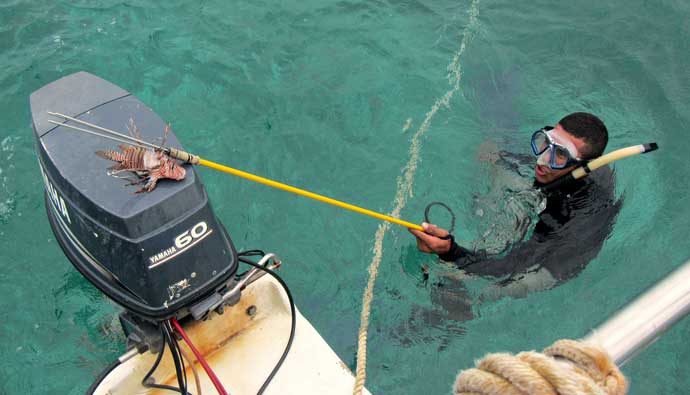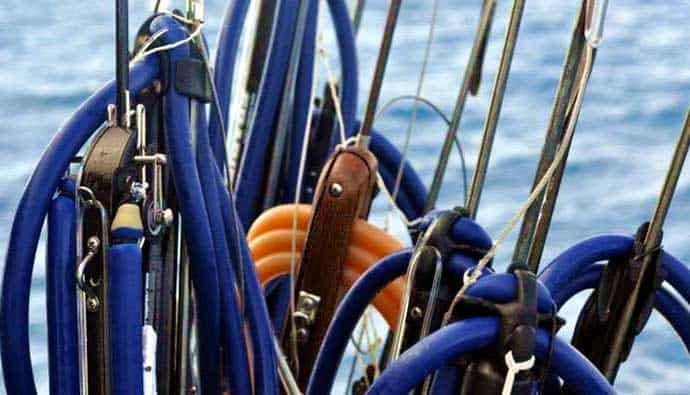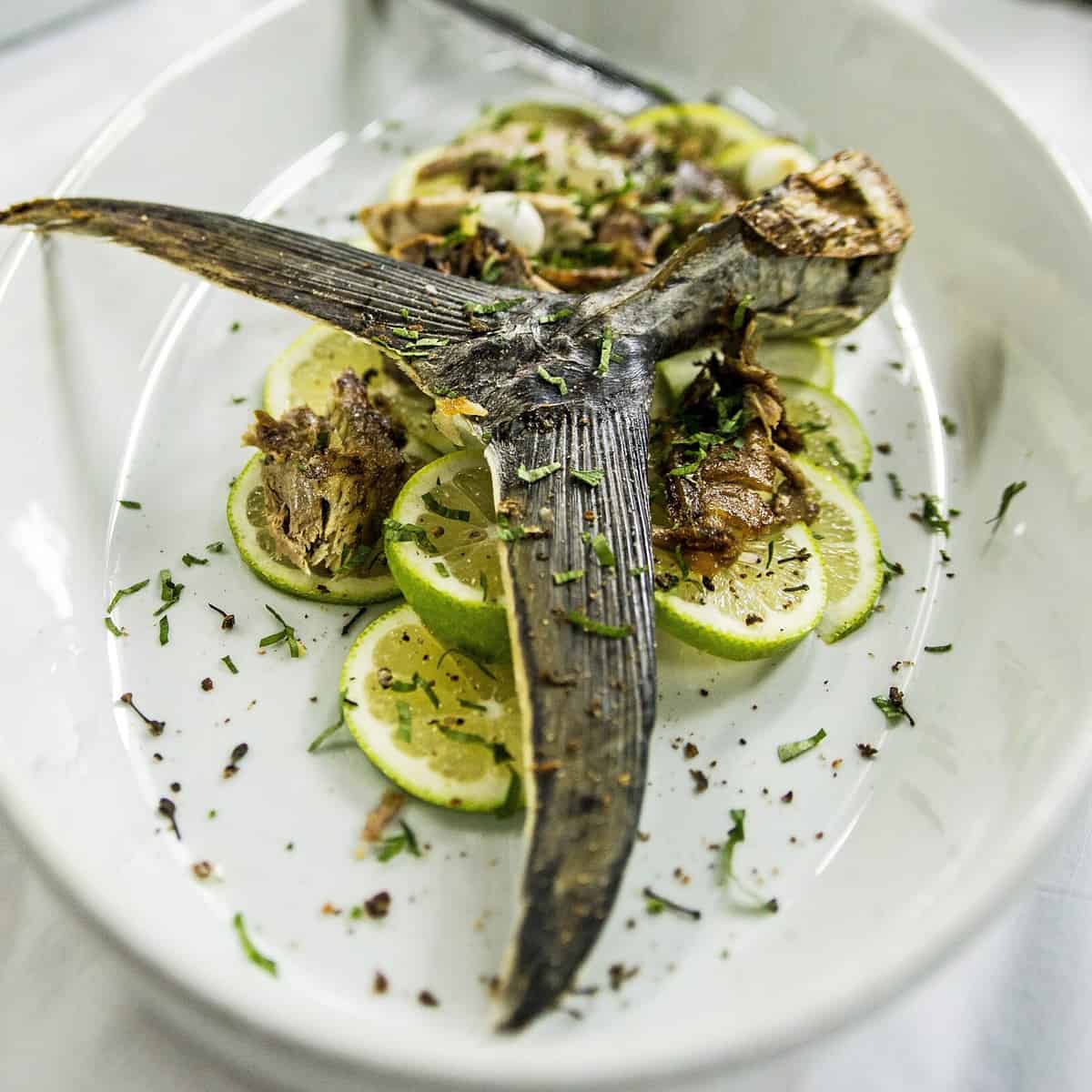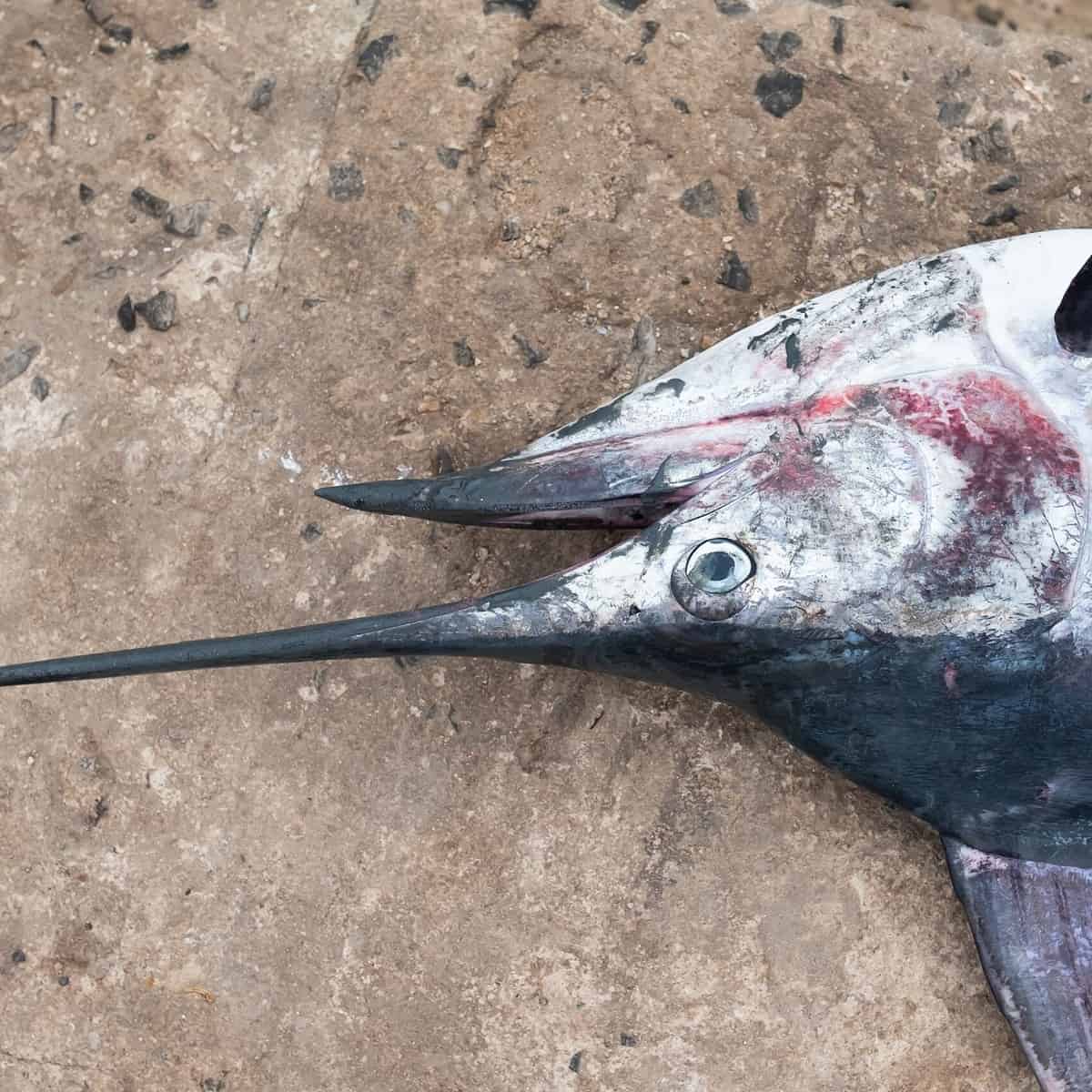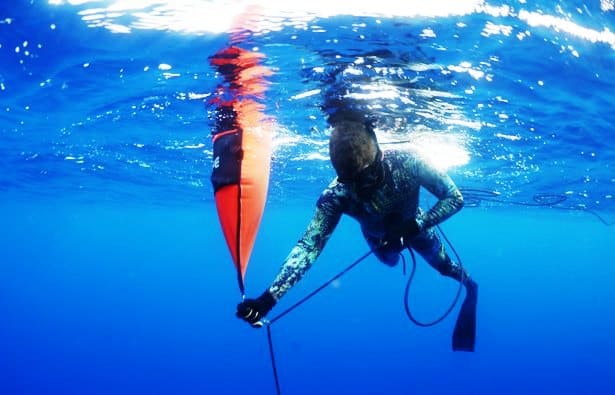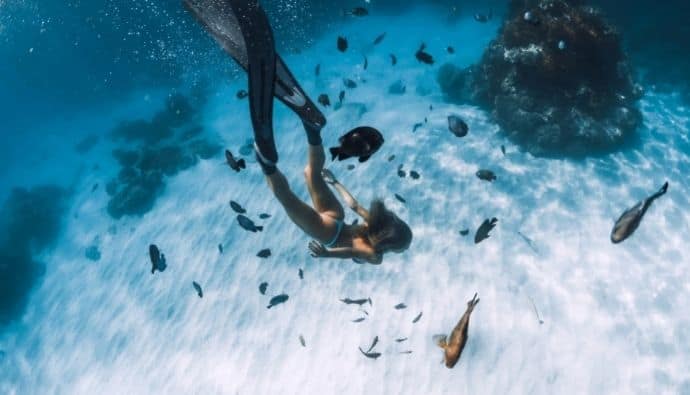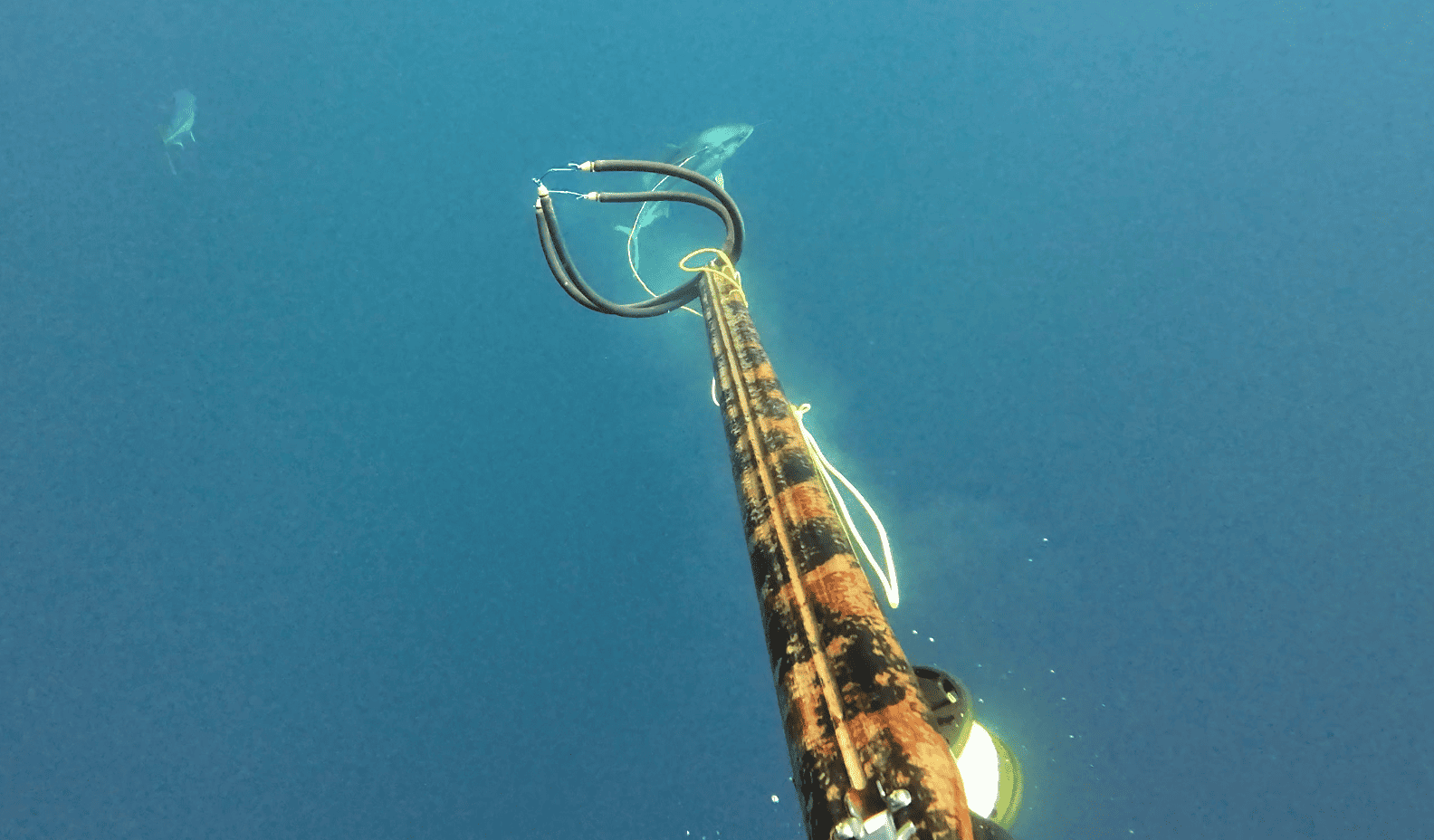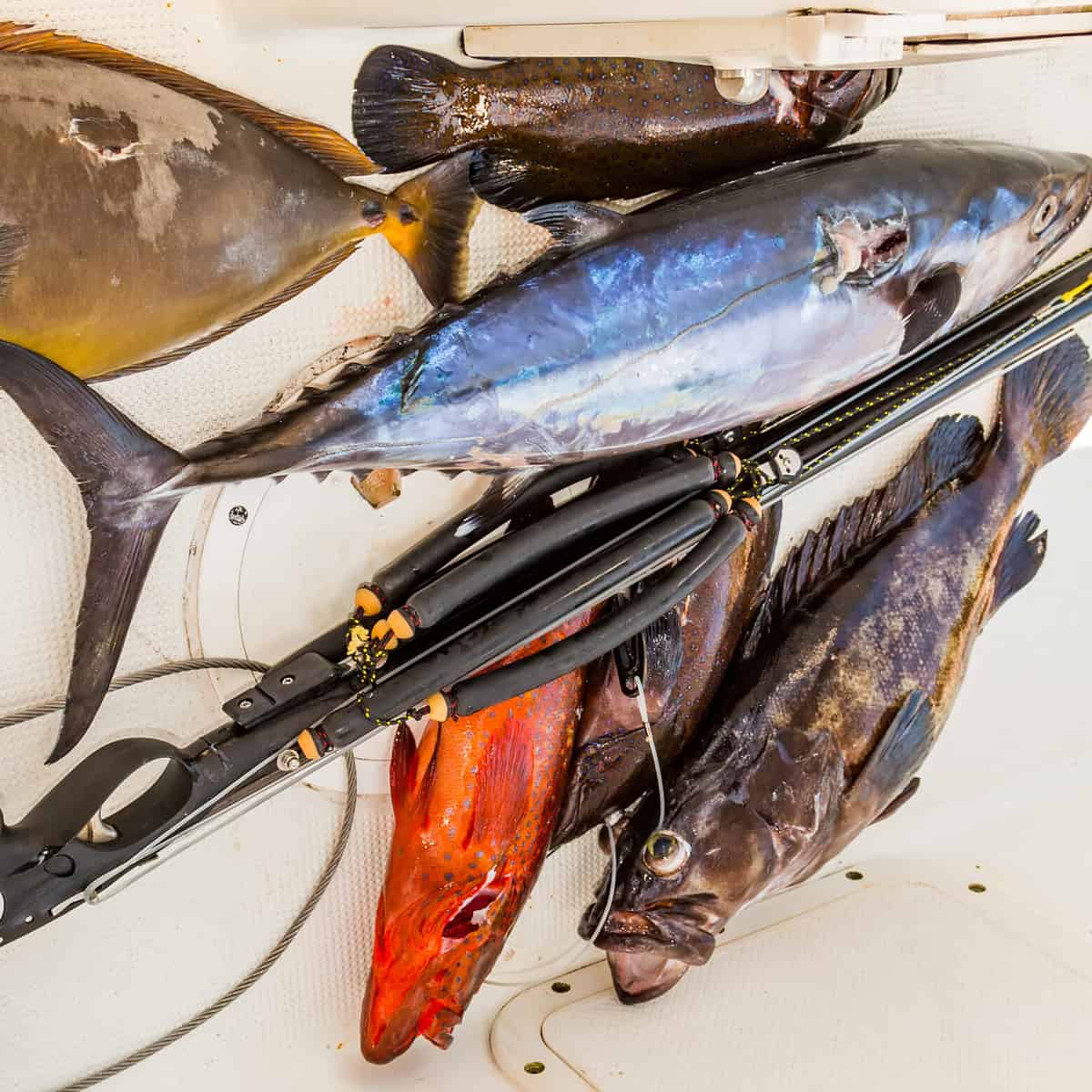If you want to improve your spearfishing, get a mentor.
Don’t do what I did. Buy gear and just wing it.
It’s a terrible idea.
Not only did I put myself in danger, but I put my dive partner at risk. Having a base level of competence before getting into the ocean with a speargun should have been common sense for me.
Thankfully, I survived and didn’t hurt anyone. Vowing to not repeat the same mistakes, I found a few OGs who were happy to share their knowledge with a newer diver.
You can find these guys and girls in the various dive clubs near your home. Search for the OC Spearos, LA Fathomiers, Long Beach Neptunes, San Diego Freedivers, and others and see when the next club meet is happening.
Peter Yee (@spearwithx) is one of my favorite mentors. He’s a wealth of knowledge and a great diver.
I asked him to share his top ten recommendations he wished every new diver would learn.
Here they are with a bit of my commentary:
1. Learn your target species and legal sizes BEFORE shooting anything! Don’t shoot and ask questions later.
You can learn your local regulations by checking https://wildlife.ca.gov/Regulations. There you’ll see each species’ most up-to-date size, quantity, and location limits.
It’s also helpful to look up the scientific name in Google Images. This will help you see the fish from different angles and lighting conditions.
2. Mark legal lengths on your speargun or pole spear, and if you’re not sure, don’t shoot.
Fish look bigger underwater. Before you go out, put a few items on the ground that represent the different sizes of fish. Stand at different distances away from the object to familiarize yourself with the size.
When in doubt, your reaction to a fish should be, “holy cow that’s big” vs “ehh is that big enough?”
Having the lengths marked on your speargun will allow you to double-check the size before getting back to the boat or shore, which could save you from a fine.
3. Don’t take more than you can consume. Just because you can shoot a bunch of sheephead doesn’t mean you should fill a stringer with them because Sheephead helps the health of our precious kelp forests.
Limiting out is legal but not recommended. Beyond the law, we should think about how much we need and can use before it gets wasted.
Certain fish, like sheephead, get easier to catch over time. Since they eat sea urchins, they are critical for the health of our kelp, which houses our fish. Going easy on the sheeps will allow us to have more fish overall.
4. Be hyper-aware of handling your speargun in and out of the water. Treat it like a laser gun constantly shooting a beam out the front so you never sweep your buddies (even when it’s not loaded).
Bad habits can hurt you or your buddies. A speargun is still a gun, so treat it as such.
Load your speargun in the water only. Don’t point it at people, especially while you’re distracted. Have situational awareness of what’s around you at all times.
5. DO NOT use a head strap for your go pros, unless you put the strap under your hood or you will lose it eventually, guaranteed! And if you do, have it tethered to your mask strap.
For the longest time, I didn’t agree with this. I like to have my strap over my hood and kept the GoPro secure by placing my mask strap over the GoPro strap.
That was until I wasn’t paying attention to a shore dive and a wave crashed over me. The only thing that remained was the snorkel in my mouth. My GoPro and mask were never to be seen again.
6. Use a bright-colored float line (no end float) on your gun just in case you drop it so it’s easy to retrieve and find. No stress and easy to pull through the kelp.
I’ve owned a black floatline for a long time, and it’s the worst color. It’s hard for my dive buddies to see it when I dive down, so I’m replacing it with a white one.
Even if you dive with a reel, it’s helpful to have a floatline so your buddy can find where you are in the murk.
7. Focus on what the waves are doing so you can time your exit out of the surf. Not watching incoming waves or mistiming it can jack you up and lose gear.
It’s helpful to look at the swell reports before you go for a dive. Look to see if it’s going to increase after a few hours while you’re in the water. It’s possible to get in with a small swell and need to exit in a big swell.
Depending on where you are, this could be trouble. Plan ahead.
8. Night diving: Always have a light (glow stick, beacon) on the top of your snorkel and always discuss the plan with buddies before entering the water and never just exit without letting your buddy know so he’s not freaking out looking for you.
Night diving is special here in SoCal. Most people will think you’re nuts going into the ocean with just a flashlight looking for lobsters.
It’s a bit freaky at first, but it’ll soon become one of your favorite ways to dive. Be bright so you can keep tabs on your partner. White or red light flashlights are great and the glowstick on the snorkel is helpful.
Dive bags on your body can also be dangerous, so if it’s possible, put your bag on a float with a glowstick and put your legal bugs in there.
9. Start learning with a pole spear hunting the reef or a small speargun to hone your hunting skills before going after pelagics. There is so much great stuff to learn and experience in the coastal reefs that are more accessible and cost-effective than charters/boat rides.
Pole spears aren’t as popular here as they are on the East Coast. That’s a shame. They are a fun tool to catch fish and help you develop a skillset for getting closer to fish.
Over time you can go after bigger fish like yellowtail with them too!
10. Slow things down and concentrate on being smooth in the water, you’ll have more bottom time, enjoy your time in the dive more, and not spook potential target fish so much.
I can tell where my mind is at by how my dives are going. If I’m worried about stuff at home or don’t get enough sleep, the dive will be an instant feedback mechanism for telling me to refocus on myself.
When you can develop a calm mind, it’ll translate into a calm state of being and you’ll be more effective at catching fish.
Action Steps
If you’re interested in going spearfishing, check out the next dive meeting near where you live. Meet a few folks and ask them for help.
You can also hit me up (@castandspear), or Peter (@spearkwithx), and we’ll point you in the right direction.
Watching YouTube videos will also familiarize you with what a typical dive looks like.
And lastly, take it slow and never go alone. Dive safe!




 Facebook
Facebook YouTube
YouTube